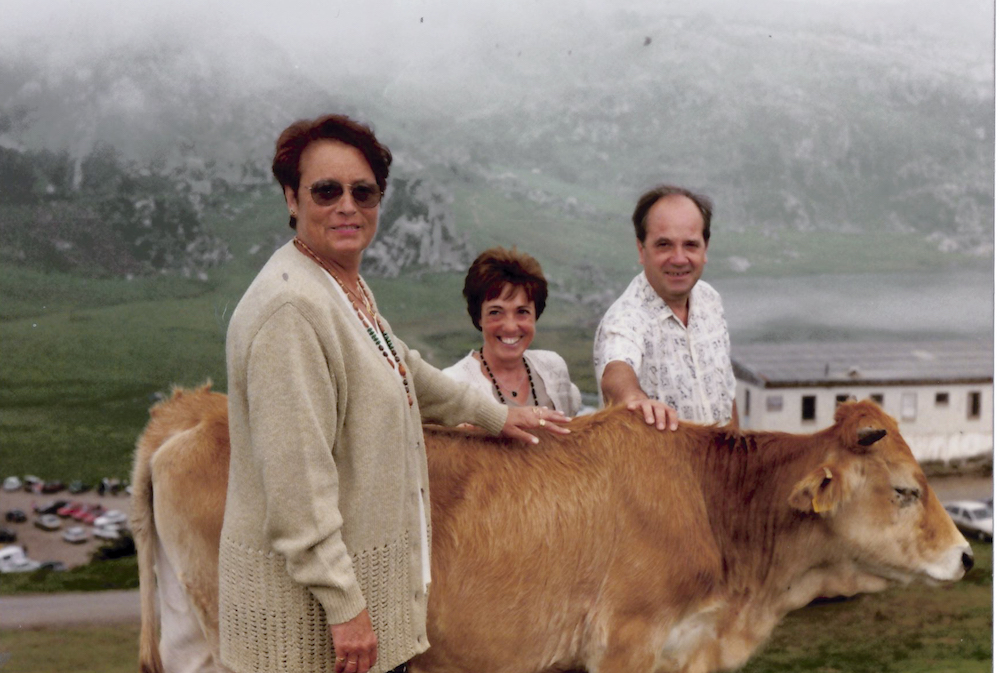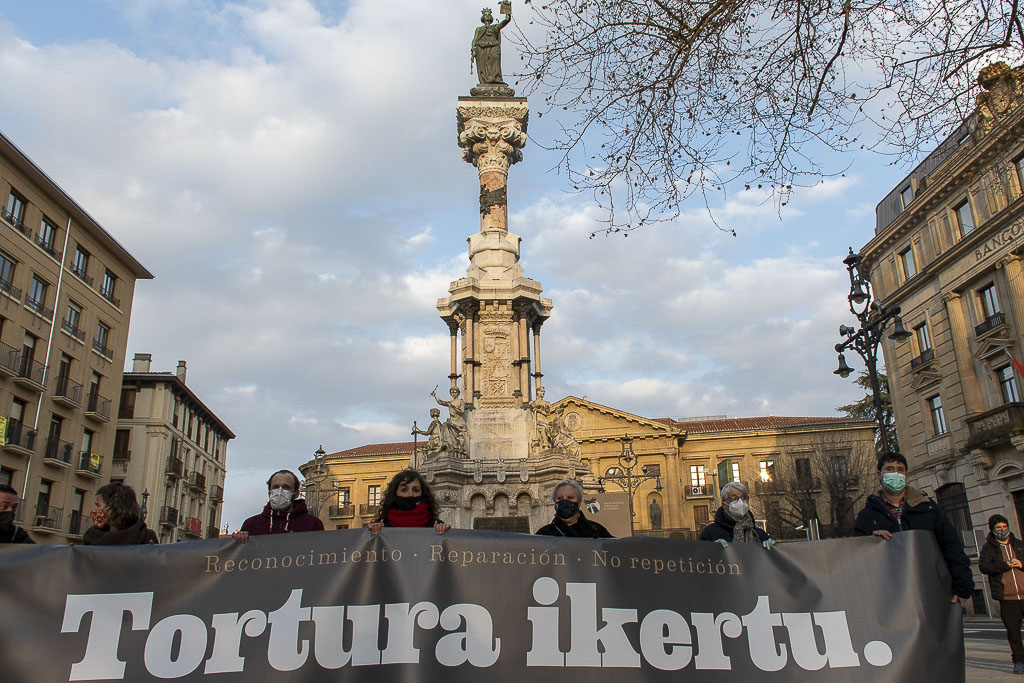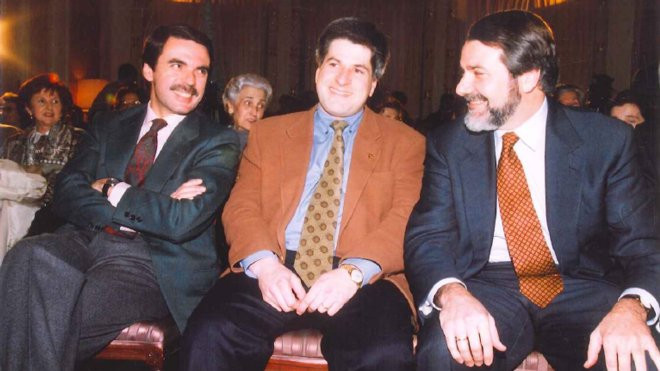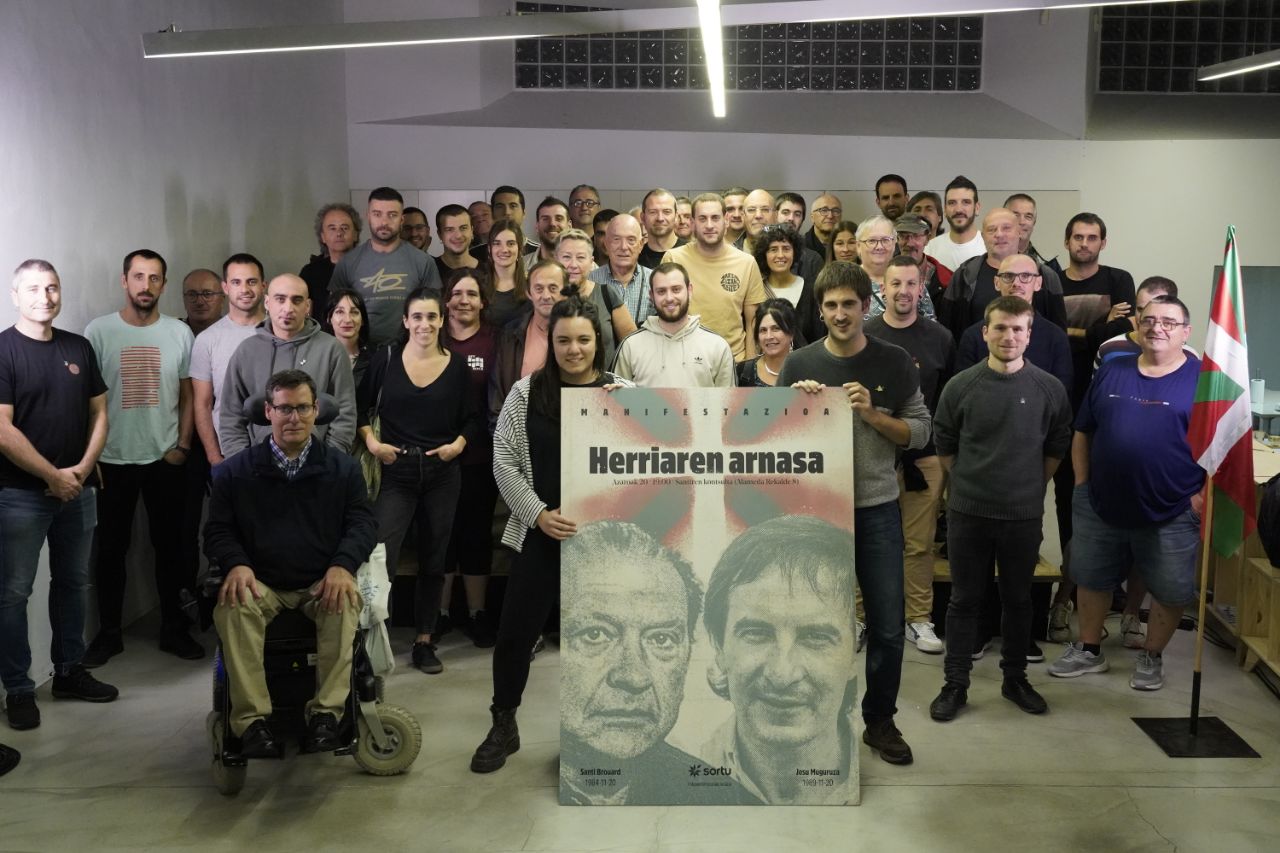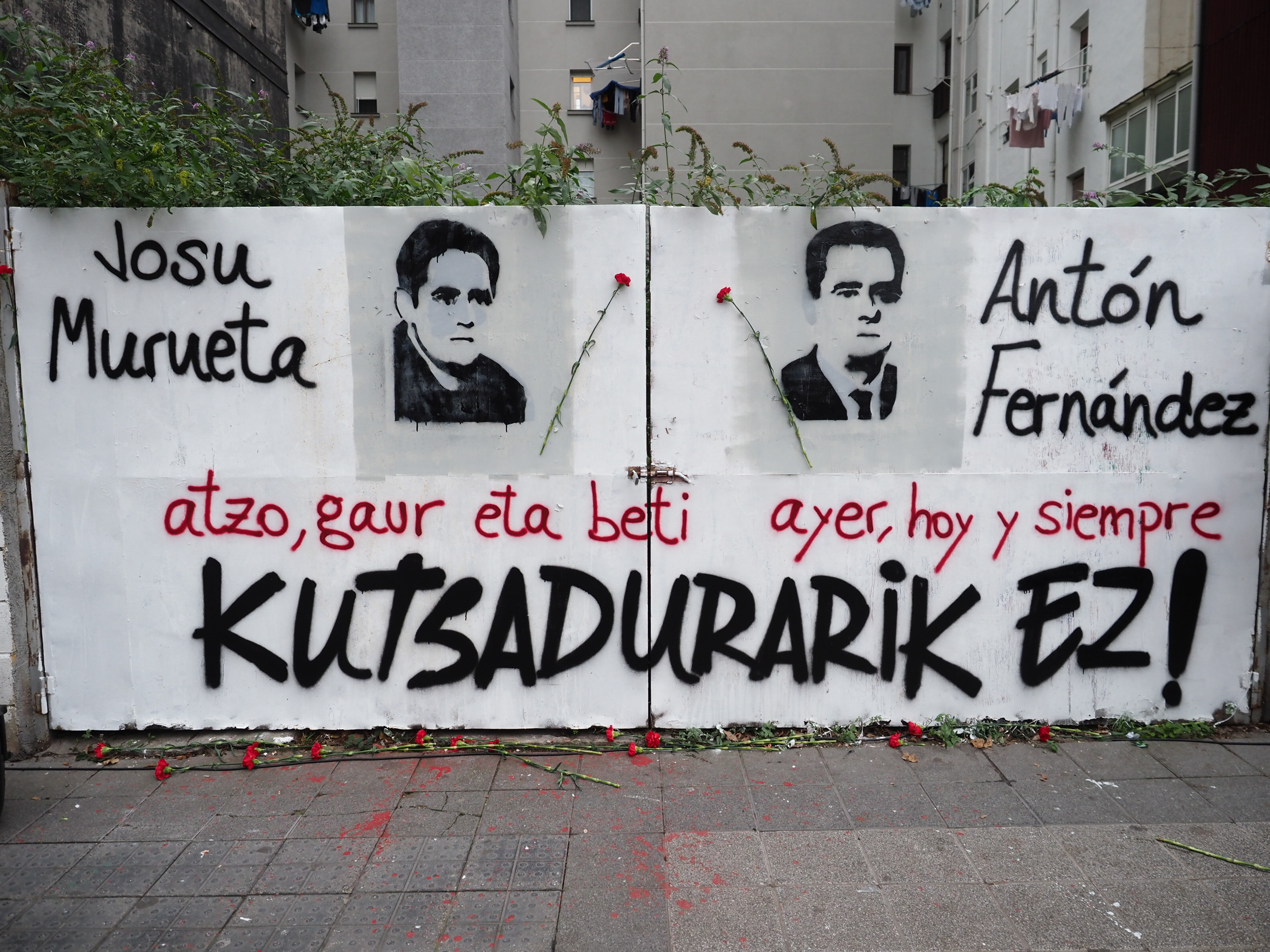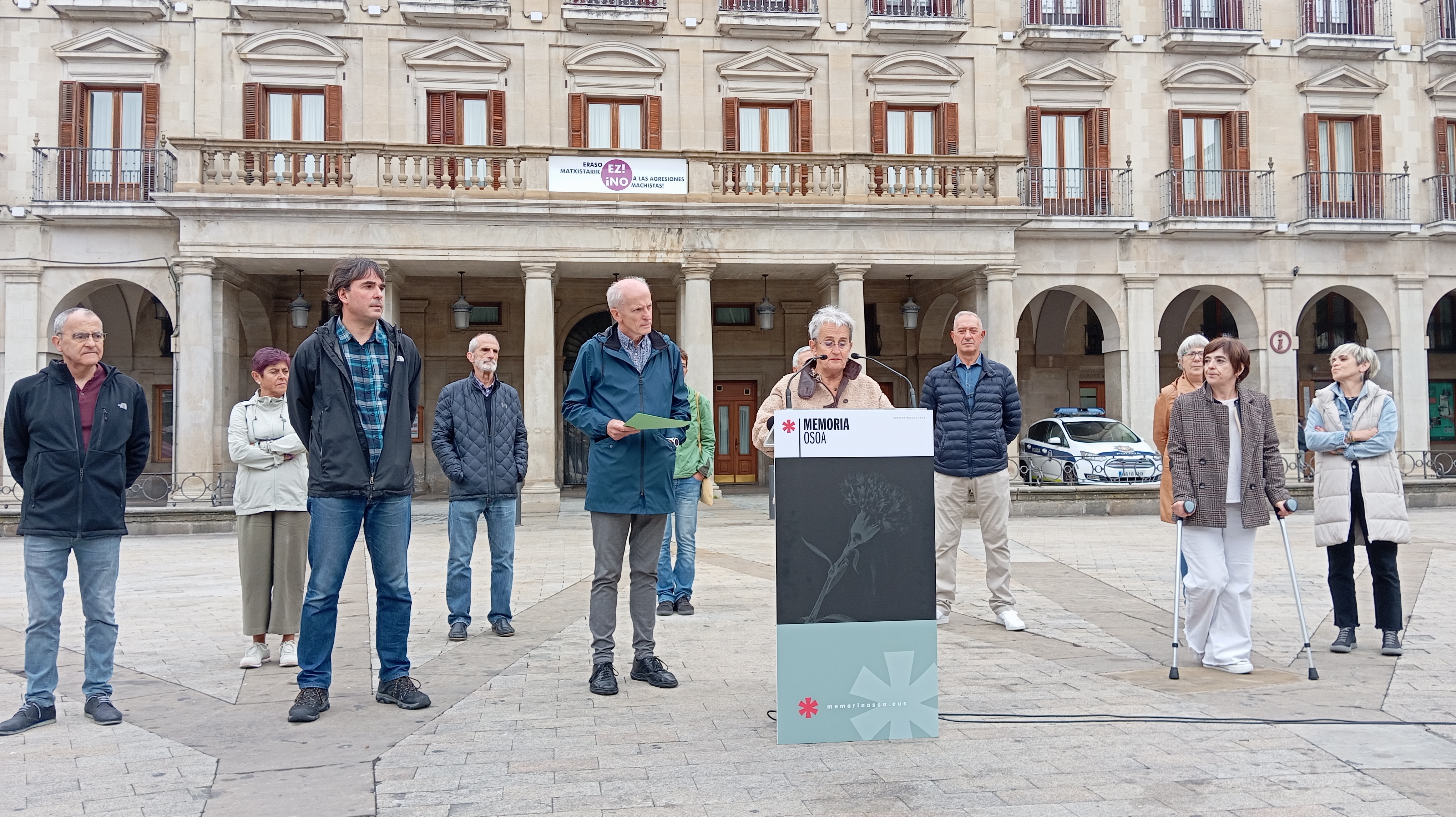They owe the truth to them
- Donostiarra Rosi Zarra died on 30 June 1995, at 58 years, eight days after being hit by a rubber ball from the Ertzaintza. The young man was wounded in a protest against Amara Berri's Pigeon de la Paz, when the incidents occurred. The Ertzaintza initiated an investigation following the complaint lodged by the Zarra family, which has been arrested. Forensic doctors concluded that the man died of natural causes. On the contrary, Zar's nephrologist stated that he had died from a pelotazo infection. The judge, who only echoed the official version, filed the case in a statement.

The family has not forgotten what happened and what is called for is truth, justice and reparation. The family of Rosi Zarra is clear that he died as a result of the Ertzaintza pelotazo, and not because of his own health. On the 30th there will be 25 years since Zarra's death and on the eve of this anniversary he has met his widow Xabier Irazusta (Centro, 1937) and his youngest daughter, Maider Irazusta (Amara Berri, 1973).
His name was Rosa, but his name was Rosi in his family and in his circle of friends. Although born in the Old Part, they married Xabier and went to live in Amara Berri. They had six children. Idoia, Amaia, Xabier, Gorka, Asier eta Maider. “He was very happy and open, even though he suffered a lot from the disease. I was always singing. But, above all, he was a very strong person,” explains Maider. He had kidney disease since he was a child, and he says his life changed radically since he had the transplant. "I was enjoying life when everything happened."
Pelotazo Day
Xabier and Maider were direct witnesses to what happened on 22 June 1995. The political and social environment of Euskal Herria was confusing. The day before, the bodies of Lasa and Zabala were transferred to the Tolosa cemetery, where serious incidents with the Ertzaintza were recorded. To protest this, the Euskal Herria Askatu platform called for a rally around the Amara Berri Pigeon of Peace. In the same place, every Thursday, the workers of Alditrans met to demand the release of the entrepreneur kidnapped by ETA José María Aldaia.
“My wife and I intended to go to the Tolosa Cemetery, but in the end we decided not to go. The following day, a concentration was convened in front of the stadium of Anoeta to report what happened in the Gipuzkoan locality of Tolosa. I just went to the rally and Rosi stayed at home. Then he came to look for me with Maider,” Xabier remembers. In the Garai press it was published that Zarra participated in the concentration, but that was not the case. “That day I stayed with my mother to have a coffee. Then I told him why we were not going to look for my father and so we met all three there,” Maider stressed.
After the protests were over, there were incidents between the two mobilizations. “At first there was not much tension, but it gradually increased. The Ertzaintza appeared and people started running towards Avenida de Madrid, towards the stadium of Anoeta, towards the entrance of the Topo… We were a little afraid of the incidents,” says Xabier. ‘The disturbances occurred in the immediate vicinity of the Anoeta stadium. Some even went up for Zorroaga and ran away. We took refuge in a staircase in Anoeta and from there we could see how the Ertzainas were hitting all the people who came out of the Topo. Then we went to the stands of the housing tower in front of the stadium,” adds Maider.
“On the shoals we got together about 30 people and we were quiet. Incidents occurred elsewhere. I was on a corner and my wife and my daughter were more centrally located. Suddenly, two Ertzainas appeared, but they weren't black, they were in blue shirt. They were about eight or nine meters from the sidewalk, when I suddenly heard a shot. Then I saw Rosi on the ground,” says Xabier. "I ran to my mother. He was then transferred to the ambulance. I don't know if I told the Ertzaines something, but they came to see me. I was on the ground screaming because I thought they were going to hit me," says Maider.
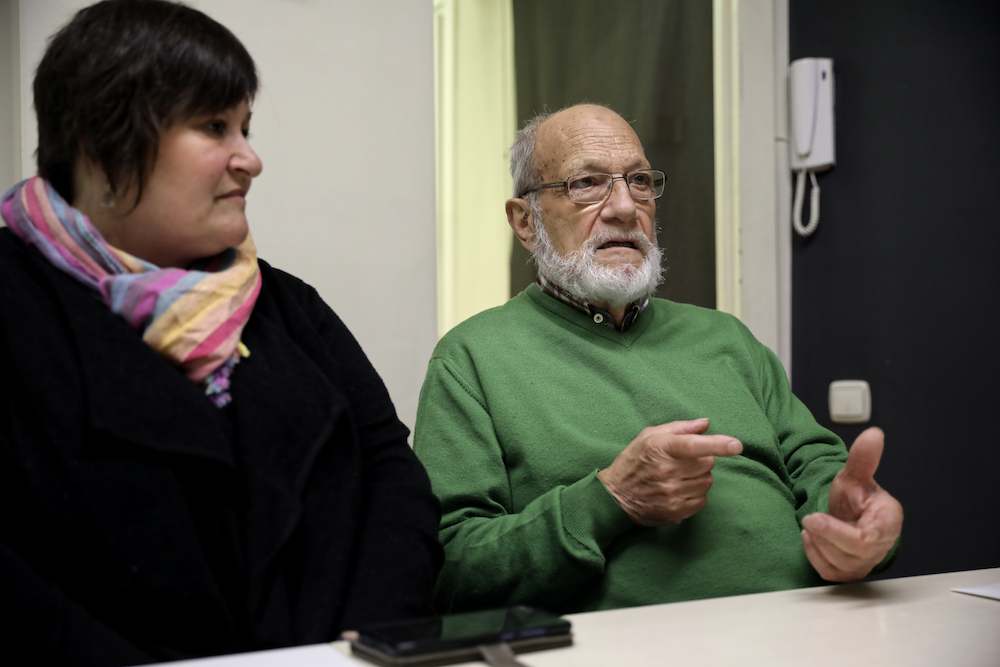
Xabier accused the Ertzaines of having thrown the rubber ball against the town council. The images were recorded on a television and the time they took to the ambulance Zarra: "The Ertzaines appeared with the intention of throwing the ball and, unfortunately, hit their wife. I could touch another one. I had a discussion with the Ertzainas, and I told them to come with me to the ambulance. In fact, the impact of the pelotazo was received at the place where he had a kidney transplant,” Xabier said. Zarra was transferred by the Red Cross to Hospital Nª SRA. from Arantzazu, where he was admitted. “Our main concern was the kidney. The mother constantly repeated ‘Kidney, kidney’. He had medical checkups and the doctors determined he had the kidney well. He had a great cardinal, but his mother was fine. She was discharged and we went home,” said Maider.
Death and judicial proceedings
In the following days, the relatives observed that Zarra had resented with the pain, but by the blow they found it normal. Xabier had a tour with the Association of Kidney Patients of Gipuzkoa, Alcer, and as an organizer he left. "I didn't think Rosi was wrong. In addition, the nephrologist told me that there was no cause for alarm,” says Xabier. Three days after receiving the punch, on June 25, Zarra felt very hurt and was admitted to the hospital, where she was admitted. He had three scans and two ultrasounds, but the doctors did not detect any injuries.
On 27 June it worsened by fever and respiratory distress. After surgery, it was found that the intestine presented a generalized infection and that the large intestine was at rest. He was transferred to the Intensive Care Unit (ICU) and died on 30 June. “The mother was paralyzed by the coup. This caused a septic shock that perforated the colon. He's been infected and you can say he died from it. He didn’t have enough defense to deal with him because eleven years earlier he had had his kidney transplanted,” explains Maider.
After Zarra's death, the family filed a complaint at the Ertzaintza police station in La Antigua. “Lawyer Iñigo Iruin and I went. Iñaki Muneta, head of the Ertzaintza in Donostia-San Sebastián, told us that he was going to investigate and clarify what happened. So far’, Xabier counts. “The Ertzaintza placed her forensic doctors and concluded that the mother died of natural causes,” adds Maider. The forensics of the Donostia-San Sebastian Court were responsible for conducting the Zarra autopsy. The family also went to a forensic doctor who reported that Zarra's death had occurred because of a punch. Alex Elosegi, a doctor from the nephrology service of Hospital Nª SRA de Aranzazu, was also of the same opinion. For years he was a doctor at Zarra, and in a letter sent to the press he said he had died from a pelotazo infection.
The attitude of the Basque Government and the statements of the Interior Minister, Juan Mari Atutxa, aggravated the pain of the family. “From the beginning they said that the Ertzaintza had no responsibility. Atutxa said at the beginning that at the time of their mother's injury there was no ertzain, but 30 people can confirm that two ertzaines appeared and launched a rubber ball," Maider said. However, the most painful statements were those made by Atutxa in the future in Congress. He came to the Basque Parliament with the forensic report, where he said that Zarra had died of a disease that preceded him, not a pelotazo from the Ertzaintza, according to the Ertzaintza report. That is, he died of natural causes. ‘Atutxa’s statements were unacceptable. The version of the Basque Government’s report did not coincide with what happened. In addition, the report indicated that, according to the Ertzaintza protocol, they could not throw balls from a distance of less than 30 metres. But Rosi was kicked from eight to nine meters’, added Xabier.
In order to clarify the cause of death, the judge of the case was awaiting the ruling of the National Institute of Toxicology. In fact, forensic reports from forensics and families were contradictory. "I remember that the report of the Institute of Toxicology did not clarify the exact cause of death. She just said the mother died of a generalized infection. However, from this report it was interpreted that the deceased had died from natural causes. I read it several times and I did not put it.’ The judge considered the latter decision and filed the case at the end of September 1995. "They filed the case without trial."
The family spoke to lawyer Iñigo Iruin to find out if there was any other possibility of an oral trial. “Iruin told me that the case was being filed and that there was no possibility of recourse. However, he told me that there was an exception; to bring doctors to trial for negligence,” Xabier explains. However, they decided not to do so. "We didn't want to accuse the doctors of death, because he died by the punch. The doctors said nothing in public, but in private they recognized that their mother's death was related to the blow received," said Maider.
The funeral of Rosi Zarra was held on 3 July 1995 in the church of St. Vincent of the Old Party. “Rosi was from the Old Party and we decided to do it there,” says Xabier. At the same time, it was a day of strike in repulsion of Zarra's death, convened by HB and LAB. The church was filled with people who couldn't get in. Around the church, Ikurriñas were placed, all with black ribbon. Around it was placed a monument in which it is remembered that the photo of Zarra, the fire and the soul of the people will not die.
Before the mass began, the priest reported that they had received bomb threats inside the temple. Specifically, two calls were received indicating that inside the church there were two bombs placed. After inspecting the site, the priests decided to go ahead, but they told those present in the church. “We also told them to continue with the burial,” Xabier said. In the afternoon, in the place where he was wounded, he was paid a tribute in which he was asked to clarify the facts.
No ruler of the time contacted the family. “They turned our back,” says Maider. “We were very amazed at everything that happened. Everything was politicized. Two sides were distinguished, those of the blue band and those of the left Abertzale, both of the left. We were put in the bag on the left Abertzale because we went to the concentration. But that's not true. My mother and I went to look for my father. Moreover, the protest was not against the kidnapping of Aldaia by the Foral Police. It was a protest to denounce what happened to the bodies of Lasa and Zabala.”
During those days the media reported that Zarra was a woman who was ill, according to the same source. “That was also false. He had had a kidney transplant, yeah, but he was in good health. A month before his death he was enjoying the mountain in Aralar, and for the second time he was a grandmother. She was healthy until she got a punch," Maider said. His mother's death was harsh for him, but he adds that the lies that spread "folded the blow."
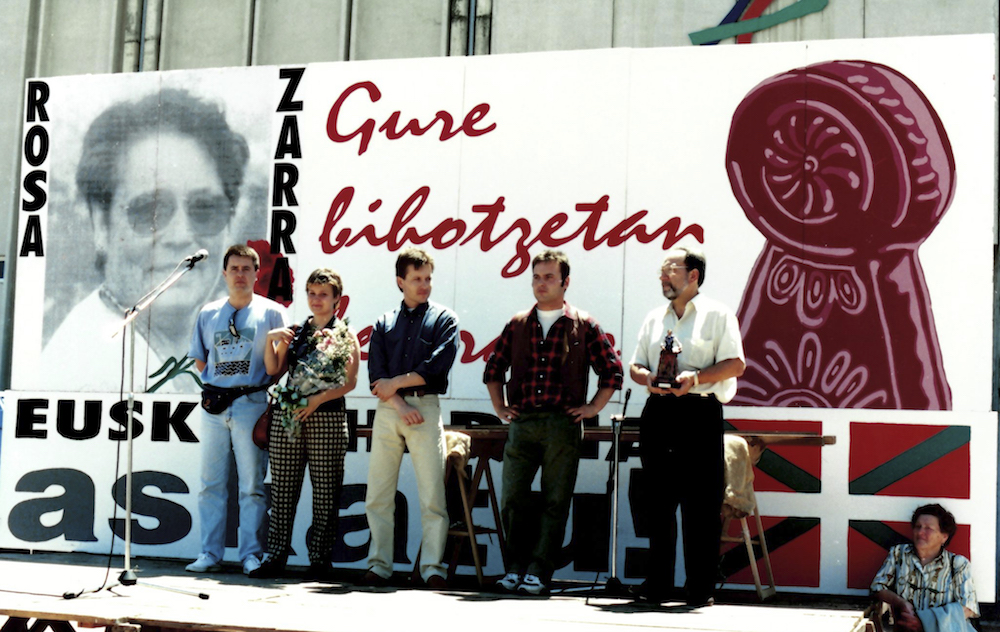
Case to be resolved
The case of Rosi Zarra returned to the media as of 2015. The death of Iñigo Cabacas caused the appearance of several families affected by the rubber ball. They asked the Basque Parliament to reject the use of this material. Among others, the parents of Cabacas, the father of Xuban Nafarrate and Xabier himself participated. “I told my wife what happened and I asked the Ertzaintza to ban the use of rubber balls.”
That same year, the Basque Government published the Map of Municipal Portraits, which included Zarrarena as one of the cases to be investigated further. In particular, the report Municipal Portraits of Violations of the Right to Life (1960-2010) was presented by the Basque Government in July 2015 and in the Zarra section it recognizes that the Ertzainas shot him a pelotazo at six meters. ‘We were aware of this report. He also recognizes that the mother's death was due to an abuse of Ertzaintza. However, they have not contacted the family to resolve the case,” explains Maider.
The only hope of the family is to recognize that the Ertzaintza and the Basque Government acted badly. “What we are asking for is true, nothing else,” Xabier stressed. "I still don't get over it. I was disappointed that I had not clarified anything. I live with a sense of injustice. We just mean we were right."
2008an Fernando Grande Marlaska epailearen aginduz atxilotu zutenean Ibai Azkonak pairatu zituen torturak aitortu ditu Nafarroako Gobernuak. Euskalerria Irratian, pauso honek suposatzen duena azaldu du Azkonak.




